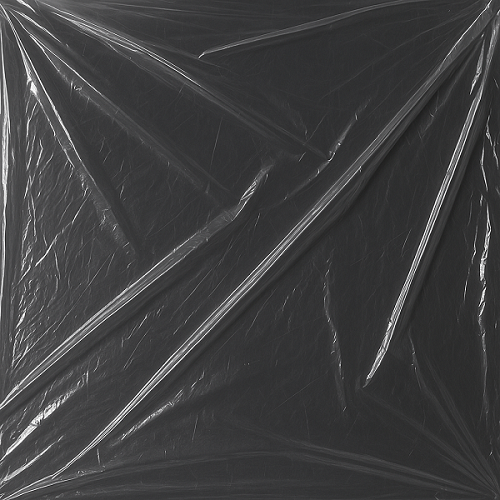In today’s industrial and packaging sectors, PE High Clear Strength Film has emerged as one of the most versatile polymer-based materials. Engineered from polyethylene (PE) resins and enhanced with advanced processing techniques, this film combines high optical clarity with exceptional mechanical strength. It is widely applied in industries ranging from food packaging and medical protection to construction, electronics, and logistics.
1. Material Fundamentals
1.1 Base Resin: Polyethylene (PE)
PE High Clear Strength Film is manufactured primarily from polyethylene, which is categorized into three main grades:
- LDPE (Low-Density Polyethylene): Offers flexibility, good clarity, and ease of processing.
- LLDPE (Linear Low-Density Polyethylene): Provides higher tensile strength and puncture resistance.
- HDPE (High-Density Polyethylene): Delivers stiffness and barrier performance but with reduced transparency.
Most formulations use LLDPE blended with LDPE to balance mechanical toughness with optical clarity.
1.2 Additives and Modifiers
To achieve superior performance, various additives are introduced during extrusion:
- Slip and anti-block agents to reduce friction between film layers.
- UV stabilizers for outdoor durability.
- Antioxidants to prevent thermal degradation.
- Clarity enhancers to maximize transparency.
- Processing aids for stable extrusion and uniform thickness control.
2. Manufacturing Processes
2.1 Blown Film Extrusion
The most common process involves extruding molten polyethylene through a circular die, then inflating it with air to form a bubble.
Key parameters:
- Blow-up ratio (BUR): Affects film orientation and tensile strength.
- Cooling rate: Faster cooling improves clarity but may affect toughness.
- Die design: Spiral mandrel or multi-layer dies ensure uniform thickness.
2.2 Cast Film Extrusion
For applications demanding extremely high clarity and gloss, cast film extrusion is preferred. In this process, molten resin is extruded onto a chilled roller, producing films with smoother surfaces and excellent optical properties.
2.3 Multi-Layer Coextrusion
Advanced PE High Clear Strength Films are often multi-layered (3–9 layers), combining different PE resins and functional layers (e.g., barrier layers, adhesive tie-layers, anti-fog coatings) to achieve targeted performance.
3. Key Technical Properties
3.1 Optical Properties
- Haze: Typically <2% for high-clarity films.
- Gloss: >60 at 60° angle measurement.
- Transparency: Nearly 90% visible light transmission.
3.2 Mechanical Strength
- Tensile strength (MD/TD): 20–40 MPa, depending on resin blend and orientation.
- Elongation at break: 400–600%, ensuring flexibility under stress.
- Puncture resistance: Significantly higher than standard PE films.
3.3 Barrier Properties
Although polyethylene is not a high-barrier material compared to EVOH or PVDC, PE High Clear Strength Film provides adequate protection against moisture, grease, and oxygen when used in multilayer structures.
3.4 Thermal Properties
- Melting point: 110–125°C.
- Service temperature range: -60°C to +80°C.
- Shrink resistance: Controlled by resin selection and orientation.
3.5 Surface and Processing Characteristics
- Coefficient of friction (COF): Adjustable (0.2–0.4) for packaging line efficiency.
- Sealability: Excellent hot-tack and low-temperature sealing, compatible with FFS (Form-Fill-Seal) machines.
- Printability: Improved with corona or plasma surface treatment, allowing for multi-color and high-resolution printing.
4. Applications
4.1 Food Packaging
- Fresh produce bags with anti-fog treatment.
- Meat and cheese packaging requires high clarity and puncture resistance.
- Frozen food wraps that maintain flexibility at sub-zero temperatures.
4.2 Medical and Pharmaceutical
- Sterilizable pouches and overwraps.
- Transparent protective films for instruments.
- High clarity ensures easy identification of contents.
4.3 Industrial Packaging
- Pallet stretch hood films.
- Protective wraps for electronics and glass.
- Heavy-duty sacks combining clarity with tear resistance.
4.4 Consumer Goods
- Clear retail display packaging.
- Flexible pouches with resealable features.
- Lamination films for enhanced aesthetics.
4.5 Agriculture and Construction
- Greenhouse covers where light transmission and mechanical durability are critical.
- Vapor barrier films in building insulation systems.
5. Technical Challenges
Despite its advantages, PE High Clear Strength Film faces several technical issues:
1. Barrier Limitations:
- PE alone offers weak oxygen and aroma barrier properties, requiring coextrusion with barrier polymers like EVOH.
2. Thermal Limitations:
- Softening occurs at relatively low temperatures, restricting applications in hot-fill packaging.
3. Environmental Impact:
- While recyclable, multilayer structures containing barrier polymers may complicate recycling processes.
4. Processing Challenges:
- Maintaining low haze during blown film extrusion requires precise cooling control.
- Achieving consistent thickness across wide web widths demands advanced die technology.
- Balancing slip/anti-block additives without compromising clarity remains a fine-tuning challenge.
6. Future Trends
- Sustainability: Development of mono-material PE structures compatible with recycling streams.
- Nanocomposites: Incorporating nanoclays or graphene to enhance barrier and strength properties without losing clarity.
- Biodegradable PE alternatives: Blending with bio-based polyethylenes from renewable feedstocks.
- Smart Films: Integration of antimicrobial coatings, oxygen scavengers, or freshness indicators for food safety.
PE High Clear Strength Film represents a pivotal material in modern packaging and industrial applications, offering a balance of clarity, strength, processability, and cost efficiency. While challenges remain in barrier performance and sustainability, ongoing innovations in resin formulation, coextrusion technology, and recyclability are paving the way for broader adoption.


